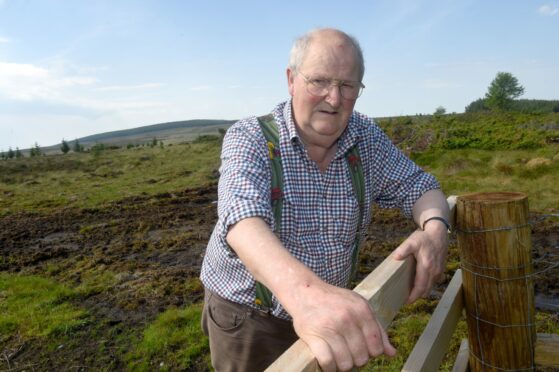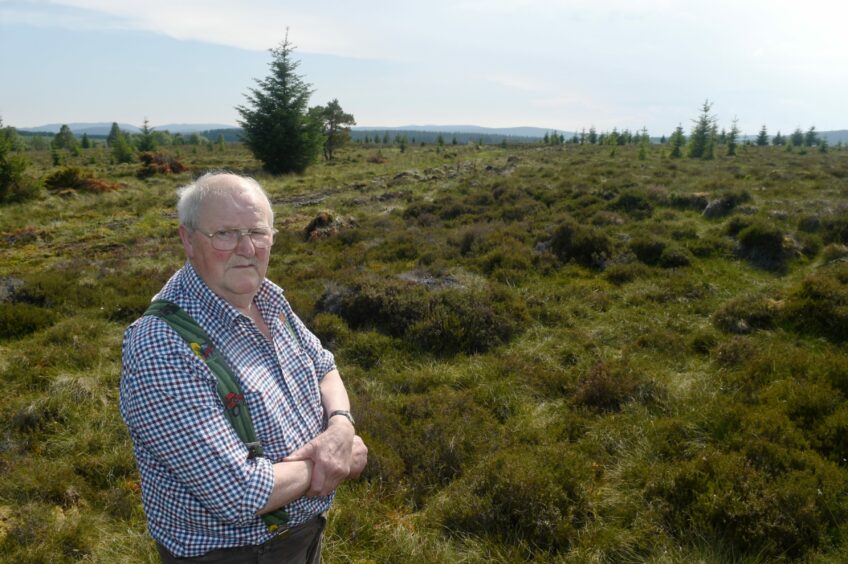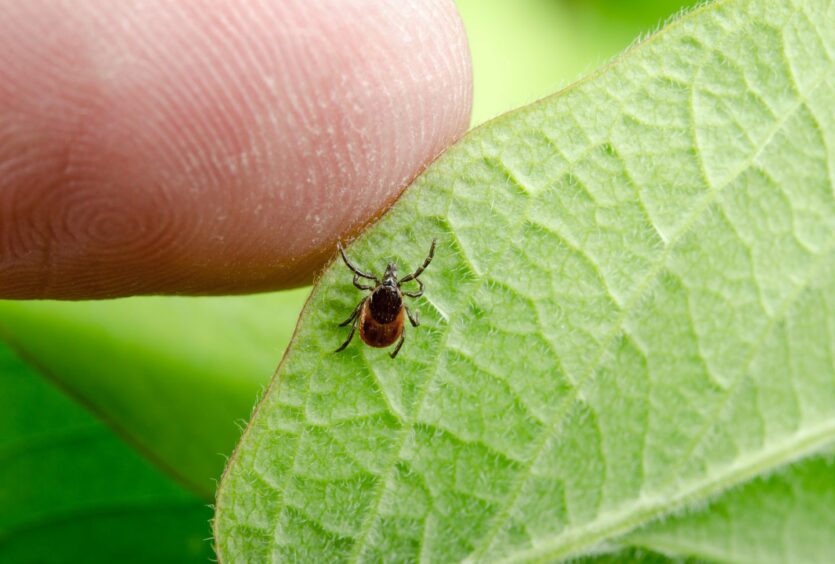A Speyside farmer has called time on rewilding projects as he believes unmanaged land may be a contributing factor to wildfires.
Alastair Nairn, from Glenlivet, believes the lack of grazing deer and large swathes of land left to grow wild may mean fire spreads much more easily than on managed farms.
The 76-year-old is now asking the government, and land managers to go back to “the old ways” to curb wildfires.
Mr Nairn, a director of the Scottish Tenant Farmers Association, believes a pause should be put on further rewilding areas until it can be determined if it is playing a part in the devastating fires that have recently struck the Highlands.
Glenlivet farmer speaks out about wildfires
On May 28 a fire spread near Cannich lasting for more than two weeks. At the size of 2,000 football pitches, it has been named as one the largest the UK has ever seen.
At the weekend a blaze at Culloden was promptly put out, and a fire at Daviot raged for days, with smoke seen from seven miles away in Inverness.
In essence, Mr Nairn is also calling for a moratorium on deer culling.
Last week The Press and Journal featured two photographs taken decades apart showing the difference between an area that had been overrun by deer.
Mr Nairn said: “I think that somebody has to speak out and tell the truth.
“People in London, and politicians need to stop telling the experts here in the Highlands how to manage their land.
“It is time to go back to the old ways. On my farm [which is managed traditionally] it would be much harder for a fire to start here.
“The moorlands are well managed, and each year we carry out a burn on so much of the heather.”
Mr Nairn is referring to the practice of muirburn, where an identified patch of land is burnt, each year.
He said: “If you have a muirburn it is very efficient. And it means the land will not go on fire again. It is a low impact fire, unlike the high temperature ones we are seeing at the moment.
“Deer are very important to the whole process of lad management. I am a deer stalker’s son, and I know first hand the role deer play in the natural management of land.”
In basic terms, deer eat the vegetation that would otherwise go on fire.
He continued: “Massacre and shooting of deer out of remote and rural areas is not the way in which the land can be well managed.
Get back to the ‘old ways’
“Deer are under constant persecution and that is why we are seeing all these problems.
“When you don’t do a well-managed muirburn the whole area becomes a tinderbox in warm weather.
“They put the fires down to climate change and over the years, yes, climate has changed.
“If we don’t do something the whole area from Aviemore to Blair Athol could go up in flames, and without a huge effort from everyone it would burn, and burn.”
Mr Nairn also believes that land that is left for rewilding has become a safe harbour for ticks, which spread lyme disease.
As well as this, he says the area where land is left to rewilding, it is a safe harbour for ticks.
A spokeswoman for NatureScot said: “Globally and in Scotland, nature is in decline and we face a climate emergency.
“The effects of climate change are already being felt in Scotland. Higher temperatures increase the risk of wildfires and droughts and these can cause significant damage to our wildlife and habitats.
“We are also seeing more flood and extreme weather events.
“Biodiversity loss and climate change are intrinsically linked, and enhancing and restoring nature – sometimes called ‘rewilding’ or ‘wilding’ – is a key part of the solution to both.
“For example, the re-wetting of peatland through large-scale peatland restoration can help us to reduce the start and spread of wildfires, and help reduce the risks of flooding.
She said people needed to “work with nature to tackle climate change” bringing with it greater environmental and societal resilience.
She continued: “Restored habitats that are good for nature are often wetter, with soils and vegetation retaining moisture. This can help to reduce the risk of wildfires and tackle the climate and biodiversity crises.
She said deer could have a “negative impact on woodlands and peatlands”.
Adding: “The sustainable management of Scotland’s deer, including a significant reduction in numbers, is therefore vital to protect and restore biodiversity and effectively tackle the nature loss and climate change crises.”
Forestry and Land Scotland declined to comment.




Conversation